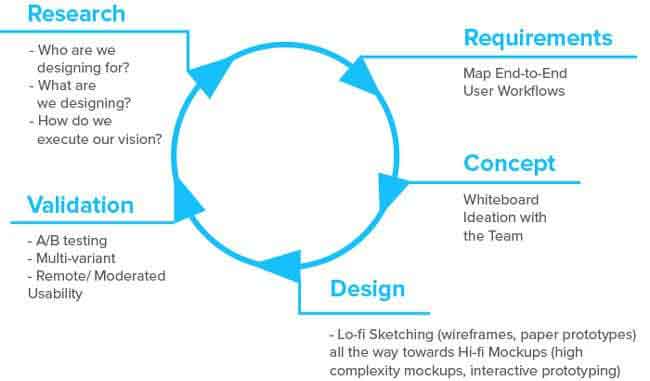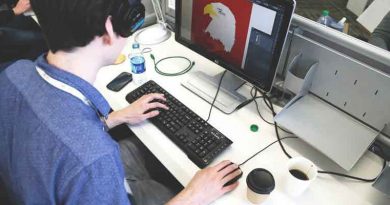5 Myths About The User Experience Design Process
The user experience design aims to put users in the heart of the product development process by addressing their everyday needs and solving their problems. Achieving this target can help creating a desirable and usable product that people can use to make their lives much easier, which subsequently leads a market success. However, this isn’t what happens in reality. Many companies avoid doing a user experience design process because of different reasons including but not limited to the cost, time consumption, and most of all the lack of understanding the importance of the user experience design to achieve a product success.
This lack of understanding the importance of the user experience design process is aligned with a number of myths that are commonly heard when discussing the UX design with the business owners or project managers. These myths reflect the fear of the unknown and a misleading culture that stands against implementing this fetal part of the design process. The below 5 myths are commonly found amongst the project team when highlighting the need of implementing a UX design process.
Related articles:
- The Price of Not Doing a Proper UX Research
- Five Common Mistakes Committed by UX Design Teams
- Five Reasons Behind a Failed UX Design Process
Myth #1: User Experience Design is a One Time Job
The user experience design is usually adopted in an early stage of the product development process in order to understand the user’s needs and address these needs in the final product layout, functions, and interaction. This leads many of the project stakeholders to believe that the UX design process is conducted only at the beginning of the new products only, yet this is not true.
As we mentioned before, the design process, also known as the design thinking process, is an iterative process where there are continuous development and improvement stages for product features to meet the user always-changing needs and expectations. And in order to achieve this continuous improvement, the UX design process should not stop after the delivery of the product. The UX designers keep receiving feedback from the users and use these feedbacks in addition to the other research data to improve the current products and offer it for the users in a form of updated products.

Myth #2: Anyone Can Do It
The user experience design process is based on the design process, which shares with it similar human-centered design characteristics such as focusing on the user’s needs, follow a number of phases that start with researching, defining the problem, and prototyping the solution. This process is widely used by designers in their design process. Therefore, the UX design process needs someone with design skills in order to be familiar with this process. The design skill required here are related to how to conduct a research and reflect the results in a form of visual prototype that can be tested and evaluated.
While the designers handle the UX design process, it takes the form of collaborative work which requires the involvement of all the stakeholders in the team. This collaboration ensures that all the business, marketing, and developing requirements are met in the final solution.
Myth #3: I Know the Users Very Well
One of the very common mistakes that lead to failed UX design process is presuming that the team knows the user very well, and build the product based on this falsified fact. Actually, we can’t know our user behavior and preferences as it changes based on the different values such as the current trends, culture, and the usage of other similar products.
While it is good to start your user experience design with an assumption, it should be validated through a solid UX research that can help the stakeholders to understand the user demographic information, needs, and problems. Based, on these results, the team define the problem that needs to be addressed in the final product and start building the first prototype or wireframe that visualize the solution for this problem.
Again, we can’t assume that the prototype solved the problem. The prototype should be tested with a representative user sample in order to ensure that the product prototype is user-friendly based on the perspective of the end user.
Myth #4: User Experience Design Adds Extra Costs to the Project
Many companies simply depend on assumptions about the user to build their products because they hate to spend extra time and money from its limited project resources in the research phase. Based on the observation of both successful and failed projects, while the user experience design increases the cost and time of the project, the cost of not doing the UX design process is, even more, higher comparing with the cost of doing it. Many products realize after finishing the development that they actually don’t fit with the target audience, which may lead to lots of reworking and frustration between team members with losing more time and cost to fix the discovered problems.
Some business owners claim that they can achieve success without any UX research. Yes, this happens in some cases, yet products that are based on good UX research are able to address the user’s needs more efficiently and subsequently achieve more success in the market. So, under-estimating the importance of the user experience design process can lead to either product failure or low market success comparing with the other projects who are doing it.
Myth #5: It is About Designing a Good-Looking Layout
Many companies confuse between the user experience design and the user interface design. Some companies believe that both are one title and treat them accordingly. However, both terms are not the same. The user experience design includes a broader definition that includes the user interface design, the interaction design, the information design, and the functions that will be included in the final product. In its holistic approach, the user experience design should include all the above tools inside it in order to build a complete successful user experience.

Unlike the UI designers, the UX designers don’t deal with visual design tools like Adobe Illustrator and similar tools. The UX designers tasks include four main phases:
Research – In this phase, the UX designers use the different research methods to understand the user needs
Requirements – Understand the user workflow and how the user interacts with the application from the technology-wise.
Concept – Ideate the problem and share the vision with the team
Design – Visualize the solution in a form of low-fidelity prototype such as wireframes
Validation – Test the prototype to ensure it address the user’s needs
Accordingly, the user experience design is the framework that handles the different components of the product development process with putting in mind the user’s needs in all the stages. Therefore, the UX designers don’t work alone, they integrate with all the teams working on the project in order to ensure that the user’s need is met in the final delivery.
While there is a general agreement on the importance of the user experienced design process, many of the misleading myths stand against adopting the process in different projects, and subsequently losing the advantages of applying it. The user experience design process can contribute to building a successful product when it is addressed and implemented properly






